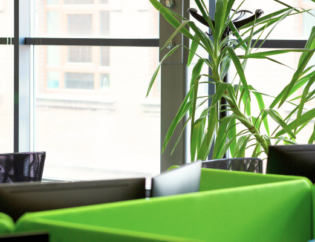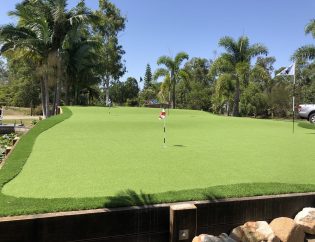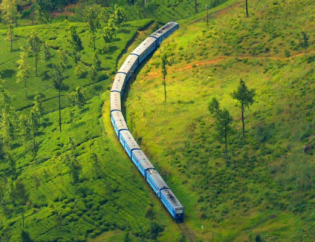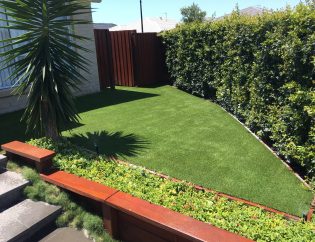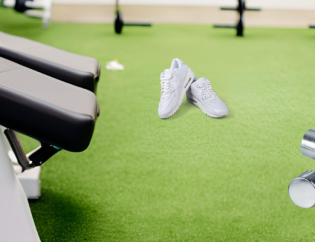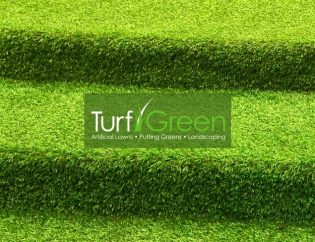
Artificial grass has become a staple in schools, playgrounds, and recreational areas, providing a safe and vibrant environment for children to play. However, with the exuberance and energy of young ones, maintaining artificial grass in these high-traffic zones requires a strategic approach. At Turf Green we are experts in maintainence and installation of synthetic grass and want to help you make the best choices for your circumstances.
We’ll explore how to maintain artificial grass in schools, playgrounds, and other areas with high child foot traffic, why artificial grass is an excellent choice for kids, address the challenges it faces in such environments, and delve into effective maintenance strategies to ensure it remains a durable and enjoyable surface for years to come.
Using artificial turf the right way to transform children’s spaces
Why Artificial Grass is Ideal for Kids
Artificial grass offers a soft and cushioned surface, reducing the risk of injuries during play. Its shock-absorbing properties provide an added layer of safety, especially in areas where falls are common. Unlike natural grass, artificial turf is resilient to various weather conditions. It remains usable even in rainy or muddy conditions, ensuring that children can enjoy outdoor play throughout the year. Artificial grass eliminates the need for constant mowing, weeding, and fertilising, making it a low-maintenance solution for busy schools and playgrounds. High-quality artificial grass is made from non-toxic materials, providing a hypoallergenic surface for kids to play on. It reduces the risk of allergic reactions, creating a worry-free play environment.
Proper Installation for Durability
Ensuring the longevity of artificial grass in child-heavy areas begins with proper installation. First, enlist the expertise of professionals to ensure the artificial grass is installed correctly. This minimises the risk of issues such as uneven surfaces and poor drainage.
Select an artificial grass variety specifically designed for high-traffic areas. Durable options with shorter blades and resilient backing are preferable for schools and playgrounds. Ensure proper drainage to prevent waterlogging, especially in areas where heavy rain is common. Adequate drainage prevents water from pooling on the surface, preserving its integrity.
Routine Maintenance Tips
To keep artificial grass in top condition, regular maintenance is essential:
- Regular Brushing: Brush the grass regularly to maintain its resilience. This helps prevent matting and keeps the blades standing upright, ensuring a consistent playing surface.
- Clearing Debris: Remove leaves, twigs, and other debris regularly to prevent drainage issues. A clean surface also reduces the risk of stains and makes the artificial grass more enjoyable for children.
- Inspect for Signs of Wear: Conduct regular inspections for signs of wear and tear. Addressing issues promptly helps extend the lifespan of the artificial grass and ensures a safe playing environment.
Handling Stains and Spills
Accidents can happen, especially where children are involved! Here are some tips for cleaning up artificial grass:
- Quick Response: Act quickly to address spills and stains. Blot liquids with a clean cloth, and use a mild detergent solution for cleaning. Prompt attention prevents permanent stains.
- Child-Friendly Cleaning Agents: When cleaning artificial grass, opt for child-friendly and environmentally safe cleaning agents. Avoid harsh chemicals that may be harmful to both children and the artificial grass itself.
- Tips for Stubborn Stains: For stubborn stains, such as those from paints or markers, consult with the artificial grass manufacturer for recommended cleaning procedures. Avoid abrasive cleaning tools that may damage the surface.
Addressing Heavy Traffic Areas
In these areas of high foot traffic, such as schools and playgrounds, there are ways to minimise issues. You might choose to distribute play equipment strategically to balance wear across the surface. This prevents concentrated traffic in specific areas and ensures even usage.
Rotate designated play areas periodically to allow the grass to recover. This prevents excessive wear in particular spots and extends the overall lifespan of the artificial grass. Finally, in areas with intense play, consider additional protective measures, such as temporary mats or turf reinforcement products. These solutions can help minimise wear and maintain the integrity of the surface.
Engaging Kids in Maintenance
Introduce educational initiatives to teach children about responsible play and the importance of maintaining the play area. Foster a sense of ownership and pride in the environment. Teach children proper use of play equipment to minimise unnecessary stress on the artificial grass. This helps preserve the surface for prolonged use.
Depending on age appropriateness, involve students in light maintenance tasks, such as picking up debris or helping with brushing. This encourages a sense of responsibility and care for the play area.
Long-Term Strategies
Artificial grass is meant to last a long time with minimal maintenance, but in commercial spaces with high foot traffic, it will be worn down faster than usual. Here are some strategies to keep the grass in top shape over long periods:
- Periodic Inspections and Maintenance: Schedule periodic inspections and maintenance to identify and address issues before they escalate. Regular care contributes to the long-term durability of the artificial grass.
- Investing in Professional Assessments: Invest in professional assessments, especially for high-traffic areas. Professionals can provide insights into the condition of the artificial grass and recommend any necessary repairs or replacements.
- Budgeting for Potential Replacement or Upgrades: Plan for the long term by budgeting for potential replacements or upgrades. While artificial grass is durable, understanding its lifespan and planning accordingly ensures a consistent and safe play environment.
Accessibility for Kids with Disabilities
One of the remarkable features of artificial grass is its versatility in catering to the needs of all children, including those with disabilities. Its even and cushioned surface provides a stable and comfortable ground for children using mobility aids like wheelchairs or walkers. Properly installed artificial grass ensures a smooth transition between the grassed area and surrounding surfaces, facilitating easy movement for children with various mobility challenges.
Additionally, the low-maintenance nature of artificial grass reduces potential obstacles for children with disabilities, creating an inclusive and accessible play environment. Schools and playgrounds can further enhance accessibility by considering the placement of play equipment and ensuring that pathways and transition areas are thoughtfully designed to accommodate the diverse needs of all children.
Artificial grass in schools, playgrounds, and areas with high child foot traffic is an investment in creating a safe, vibrant, and enjoyable environment for children. By understanding the challenges and implementing proactive maintenance strategies, schools and recreational spaces can ensure that artificial grass remains a durable and inviting surface for countless hours of play. Prioritising the well-being of the artificial grass contributes to the well-being and joy of the children who use these spaces, creating lasting memories and positive experiences.
Are you ready to explore the idea of artificial grass for your commercial property? If you live somewhere between Brisbane and the Gold Coast in QLD, Australia Contact Turf Green today and discover how synthetic turf can transform your spaces.

